Have you ever wondered when you should sow seeds or move vegetation? If you’re brand-new to planting or need some reminders, here’s a basic vegetable planting calendar to get you started with the dates based on the USDA Plant Hardiness Zone 5 location.
In zone 5, the first frost occurs around October 15 and the last frost occurs around May 15, so there is plenty of time for your plants to thrive, whether you’re growing veggies, flowers, fruits, or herbs.
Therefore, if you follow our planting recommendations, you can enjoy each season’s gorgeous fruits and flower blooms.
By the end of this article, I have no doubt that you will be able to grow like a pro with the help of our comprehensive planting calendar for Zone 5!

Table of Contents
What You Need to Know to Get Started Gardening in Zone 5
1. Planting Time Rules
All gardeners, particularly those working in cooler zones, should familiarize themselves with frost dates.
When Planting Too Early
Plants exposed to frost might be damaged or killed, so timing your planting too early can be disastrous.
When Planting Too Late
Planting too late raises concerns about whether or not the plants will have enough time to reach full maturity and yield a good crop before the first frost.
2. USDA Hardiness Zones: What Are They?
The United States Department of Agriculture (USDA) has created a map showing where different plants may be grown successfully year after year based on the local climate. An area of common climate conditions is called a “hardiness zone.”
The USDA has split the US into 13 growing zones, each with a temperature range of 10 degrees based on the average annual lowest winter temperature.
3. USDA Zone 5 Hardiness Dates
It’s vital to keep an eye on the forecast before you plant, as frost dates can change by a week or two.
| First Frost Date | Last Frost Date |
| October 15 | May 15 |

4. USDA Zone 5 Characteristics
Zone 5 of the United States Department of Agriculture’s plant hardiness map describes a region of North America where winter lows typically fall between -20°F and -10°F.
With a common frost-free growth season of around 140–180 days, USDA Zone 5 experiences cold, hard winters and moderate to hot summers.
The growing season in Zone 5 is significantly shorter than in zones with higher average temperatures.
There are two distinct microclimates inside Zone 5: 5a and 5b.
The temperature and conditions for cultivation in each of these microclimates are slightly different from those of the others.
- The typical low in Zone 5a ranges from -15 to -20°F.
- Temperatures in Zone 5b typically drop to between -10 and -15°F.
5. USDA Zone 5 Location
Zone 5 includes 32 different states.
Climate and geography have resulted in multiple hardiness zones within each state. In Wyoming, for instance, there are four such zones.
Zone 5 begins in the northern part of the country and covers both New England and the mid-Atlantic states. This includes states like Maine, New Hampshire, New York, Pennsylvania, Virginia, and West Virginia.
The northern area of the Central United States (states including Minnesota, Iowa, Nebraska, and Wisconsin) also makes up Climate Zone 5.
It stretches from Montana to Wyoming, then north through California, Oregon, Washington, and Idaho.
Zone 5 also includes a portion of Colorado, Nevada, and Alaska.
A single state may turn out to be split into many climate zones; thus, it’s essential that you examine the exact zone 5 details for your state.
Below is a table with additional information.
Zone 5 States
1. January
The month of January in Zone 5 is generally a quiet month. Due to the low temperatures, gardening tasks are limited this month.
Garden Tasks in January
- Keep an eye out for ice and snow on tree or shrub branches, and brush it off to avoid breakage.
- Maintain your gardening equipment by making sure it is clean and sharp.
- If you haven’t already, now is the time to place your seed orders to guarantee you obtain the varieties you want.
2. February
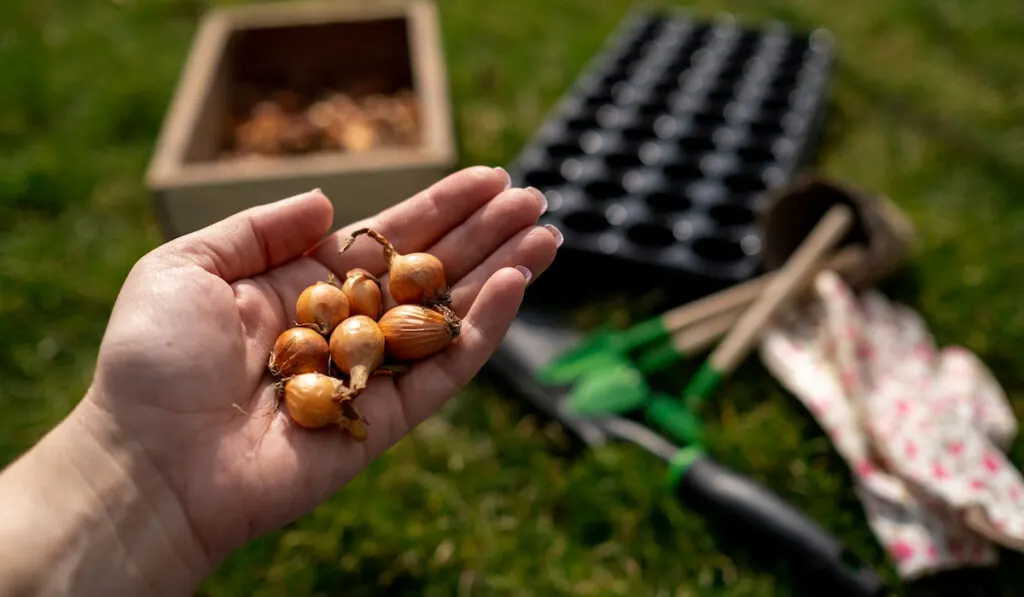
Planting Vegetables
Start Seeds Indoors:
- Asparagus
- Celery
- Onion
- Lettuce
Garden Tasks in February
- Pick up any remaining dry waste from your garden beds and add it to your compost bin.
- When the conditions are right, spread a layer of compost measuring between one and two inches thick throughout each garden bed.
3. March

Planting Vegetables
Start Seeds Indoors:
- Arugula
- Broccoli
- Brussels Sprouts
- Cabbage
- Cauliflower
- Celery
- Eggplant
- Kale
- Lettuce
- Okra
- Peppers
Planting Herbs
Start Seeds Indoors:
- Rosemary
Planting Flowers
Start Seeds Outdoors:
- Nigella
- Poppy
- Larkspur
Garden Tasks in March
- If you haven’t done so before, now is an excellent time to have fruit trees and berry bushes pruned. You will want to finish this while the plant is in its dormant state and before it begins its development for the spring.
- This is the month to hang birdhouses that were constructed over the winter. Soon, birds will begin their search for suitable places to nest.
4. April
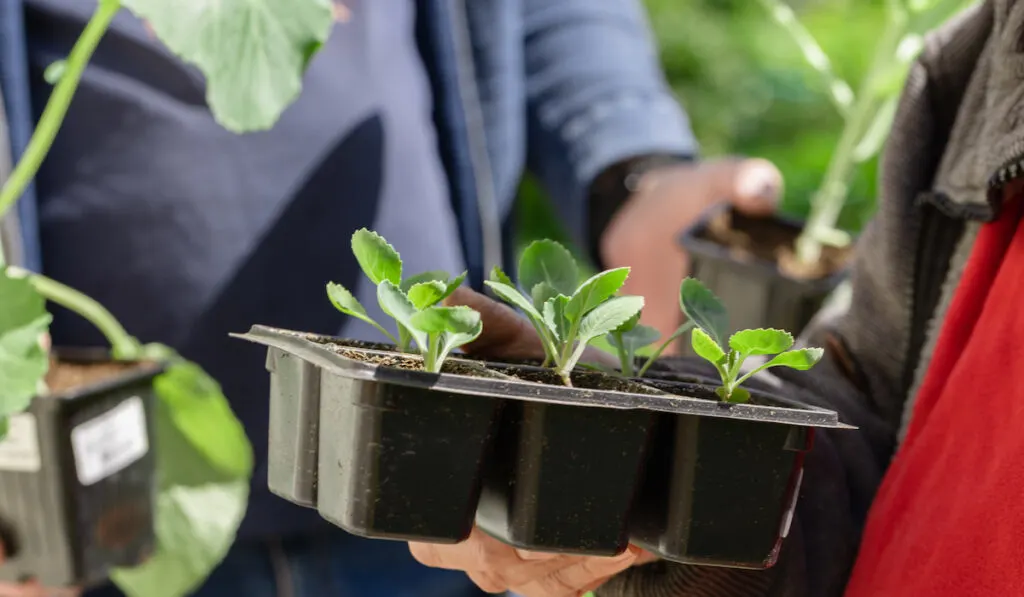
Planting Vegetables
Start Seeds Indoors:
- Arugula
- Beans (bush, pole, lima, and dry)
- Brussels Sprouts
- Cabbage
- Cauliflower
- Cucumber
- Eggplant
- Kale
- Lettuce
- Okra
- Onions
- Peas
- Peppers
- Spinach
- Tomatoes
Start Seeds Outdoors:
- Arugula
- Asparagus
- Beets
- Broccoli
- Brussels Sprouts
- Cabbage
- Carrots
- Cauliflower
- Cilantro
- Collards
- Dill
- Endive
- Horseradish
- Kale
- Kohlrabi
- Lettuce
- Onion
- Oregano
- Parsley
- Peas
- Radish
- Rhubarb
- Spinach
Planting Herbs
Start Seeds Indoors:
- Plant all herb seeds inside.
Start Seeds Outdoors:
- Basil
Planting Flowers
Start Seeds Indoors:
- Plant all the flower seeds inside.
Garden Tasks in April
Grapes, raspberries, and blueberries benefit from fertilization before a new growth spurt.
If you didn’t get around to cutting the fruiting canes to the ground after last year’s crop, you should get on that right away.
5. May
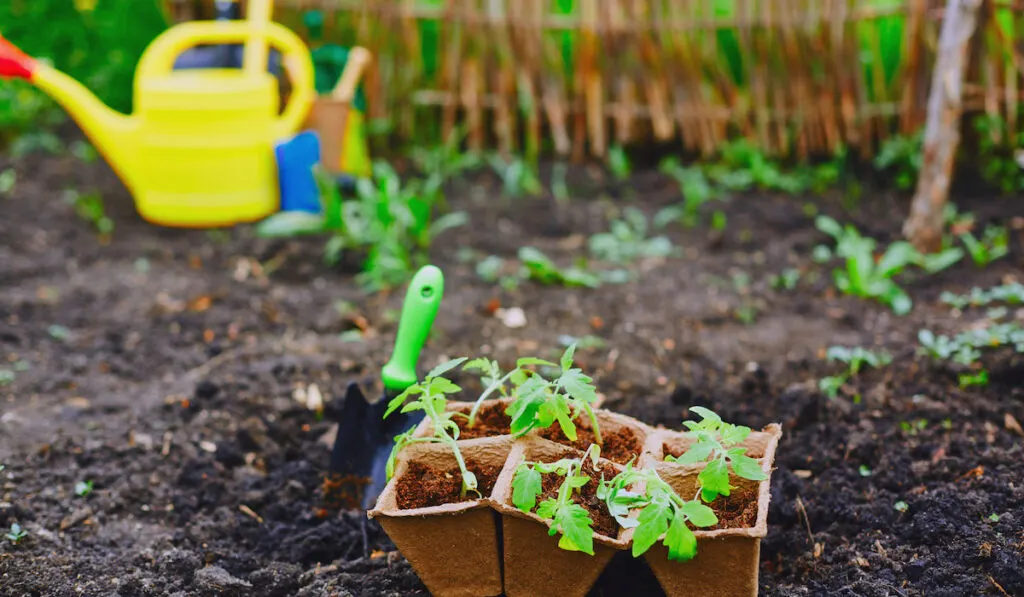
Planting Vegetables
Start Seeds Indoors:
- Cabbage
- Corn
- Cucumber
- Onion
- Squash
- Watermelon
Start Seeds Outdoors:
- Arugula
- Beans (bush, pole, snap, and lima)
- Beets
- Broccoli
- Brussels Sprouts
- Cabbage
- Carrots
- Cantaloupe
- Cauliflower
- Celery
- Chard
- Collards
- Cucumber
- Eggplant
- Endive
- Kale
- Kohlrabi
- Lettuce
- Melons
- Muskmelon
- Onion
- Parsley
- Parsnips
- Peas
- Peppers
- Pumpkin
- Radish
- Rhubarb
- Rutabaga
- Spinach
- Summer Squash
- Winter Squash
- Tomato
- Turnip
- Watermelon
Transplant:
Transplant outdoors all remaining indoor seedlings.
Planting Herbs
Start Seeds Outdoors:
Plant all herb seeds outside.
Transplant:
Transplant outdoors all remaining indoor seedlings.
Planting Flowers
Start Seeds Outdoors:
Plant all the flower seeds outside.
Transplant:
Transplant outdoors all remaining indoor seedlings.
Garden Tasks in May
- New trees and bushes should be planted right away.
- Fertilize your perennial flowers while they are just starting to grow.
- Vegetables and other plants that have recently been transplanted need to be guarded against pests such as insects and snails.
6. June

Planting Vegetables
Start Seeds Outdoors:
- Arugula
- Beans (bush, pole, snap, and lima)
- Beets
- Chard
- Corn
- Cucumber
- Melons
- Muskmelon
- Okra
- Onions
- Peas
- Peppers
- Pumpkin
- Radish
- Rutabaga
- Summer Spinach
- Summer Squash
- Winter Squash
- Tomato
- Watermelon
Planting Herbs
Start Seeds Outdoors:
Plant herb seeds outside.
Garden Tasks in June
- As crops mature, harvest them frequently.
- Tomatoes benefit from being staked for better health and easy harvesting. When suckers are between an inch and a half an inch in length, they should be cut off.
- Weed the garden. Weeds are pests because they steal water and nutrients from your plants.
- Keep an eye out for signs of pests and diseases so you can take preventative action if necessary.
7. July
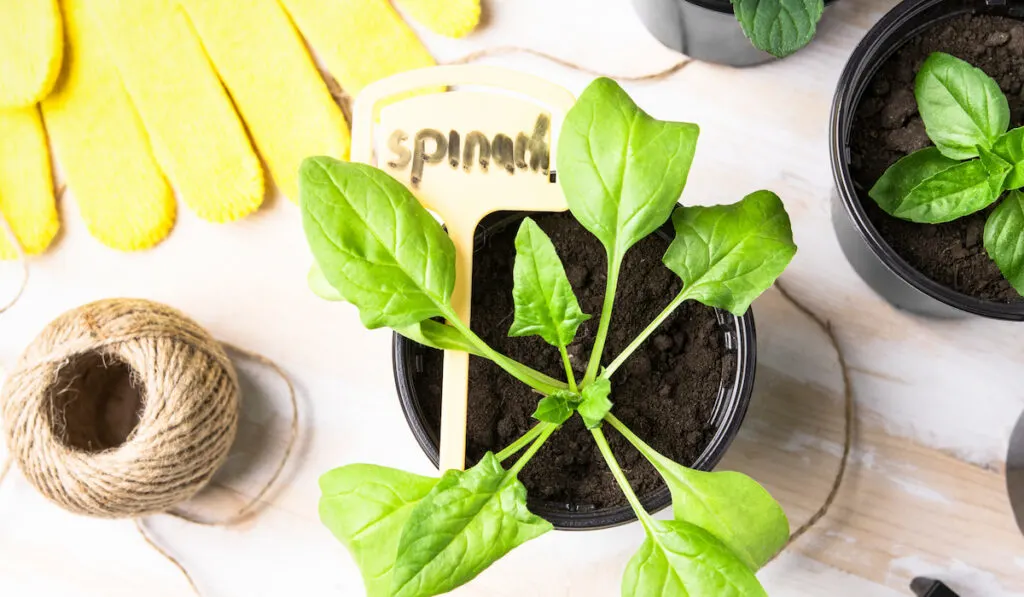
Planting Vegetables
Start Seeds Outdoors:
- Beans (bush)
- Chard
- Corn
- Cherry Tomatoes
Start Seeds Indoors (for the fall harvest):
- Broccoli
- Kale
- Lettuce
- Peas
- Spinach
Garden Tasks in July
- Each week, your garden requires an inch of rain or irrigation. Water your plants in the evening or early morning during dry weather.
- Mulching plants can help preserve water and increase harvests.
- Consistent crop harvesting is a surefire way to keep yields high.
- If you want to keep your potatoes, carrots, and onions from becoming green, just bury them in the ground. Mulch or soil can be used to bury them.
- At the start of July, nitrogen fertilizer can be used on garden plants.
- Tomatoes, peppers, and eggplant should not be fertilized until they have set fruit.
- Incorporate the fertilizer a couple of inches out from the base of the plants, and then water it. Keep the fertilizer away from the stems of the plants.
- Removing old blossoms from a plant’s flowering stems allows the plant to draw on its stored energy for new flowers.
- Since flowering is a high-energy process, fertilizing flowering annuals can be very beneficial once blooming has begun. Before the season ends, give the soil one last dose of fertilizer.
- Maintain a weed-free garden.
8. August

Planting Vegetables
Plant Seeds Outside for the Fall Harvest:
- Arugula
- Bush Beans
- Beets
- Broccoli
- Carrots
- Chives
- Kohlrabi
- Kale
- Lettuce
- Mustard
- Radish
- Peas
- Spinach
- Turnips
Transplant:
Transplant all indoor seedlings outdoors for the fall harvest.
Garden Tasks in August
- For the best flavor and a continuous harvest, it’s best to pick your crops as they ripen.
- Maintain consistent checks for pests and diseases.
- On hot and dry days, water is essential (it is best to water in the early morning).
- Maintain a weed-free garden.
- It’s important to get rid of non-productive old plants so that pests and diseases don’t have a place to develop.
- By removing spent blossoms, you can encourage your plants to use their reserves to produce more flowers.
9. September
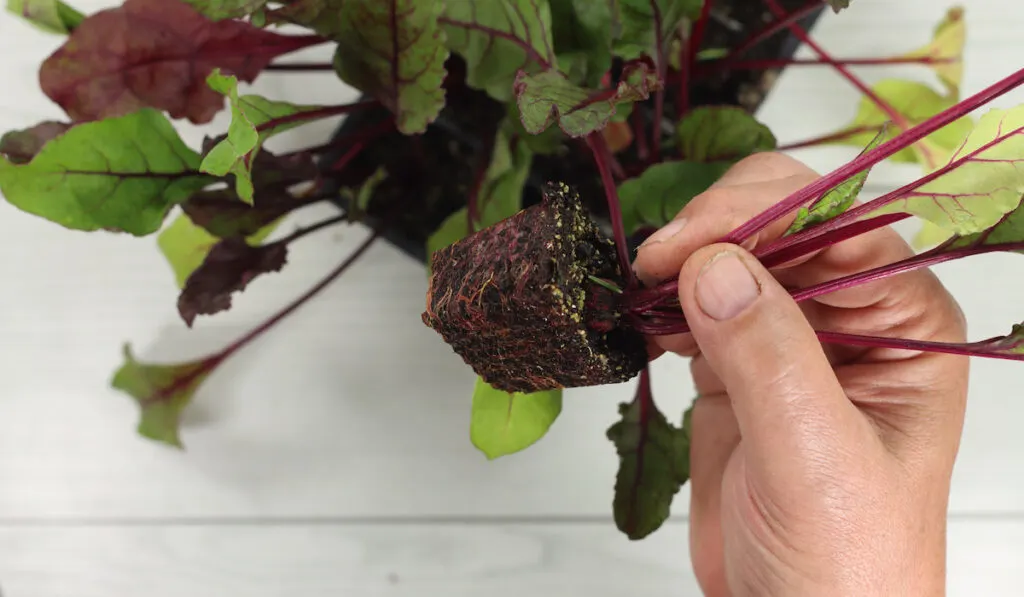
Planting Vegetables
Plant Seeds Outside for the Fall Harvest:
- Arugula
- Beets
- Broccoli
- Cabbage
- Carrots
- Cauliflower
- Kohlrabi
- Lettuce
- Onion
- Radish
- Spinach
Transplant:
Transplant all indoor seedlings outdoors for the fall harvest.
Garden Tasks in September
- Keep an eye on the forecast because the first frost that might harm plants can occur this month. Wrap warm-season crops overnight with newspapers and other heat-trapping materials. When morning comes, take off those covers.
- After the tops of onions and garlic have turned yellow and fallen off, they can be harvested and cured for storage in a dry location with good ventilation. After a week of curing, their necks should be completely dry.
- Pumpkins, gourds, and winter squash should have a piece of stem left on the fruit when harvested. This will extend the shelf life of the fruit.
- After harvesting, it’s time to clean up the garden beds and toss the leftovers in the compost. Do not put plants in the compost pile that show symptoms of sickness.
- It’s ideal to work on your garden soil in the fall. Raise the percentage of organic matter by including manure and compost. They can be used as an additional covering on flower and vegetable beds to provide nutrients throughout the winter.
10. October

Planting Flowers
Plant bulbs that bloom in the spring.
Garden Tasks in October
- Veggies planted later in the season should have a row cover protecting them from frost. The plants will continue to grow strongly until harvest time.
- Beans, eggplant, peppers, and tomatoes may still be harvested from your garden before a strong frost set in, so keep an eye on the forecast.
- You can overwinter perennials in pots by burying them in the soil or surrounding them with a thick layer of straw.
- Prepare the remaining herbs for drying or freezing.
- Perennials that bloom in the spring and summer should be dug up and divided right now. Trim the overgrowth, then replant and water thoroughly.
- You can save seeds from your favorite non-hybrid, self-pollinating flowers by letting the blossom heads develop.
- Spread seeds out on newspaper and flip them frequently so they can dry out. Keep the seeds in a sealed glass container or sealed envelope in a cold, dry, dark area.
- Before a strong frost, ensure the hoses are drained, and the bird baths are empty.
11. November

Planting Flowers
New spring flowering bulbs should be planted right away if you haven’t already.
Garden Tasks in November
- Don’t harvest your cole crops just yet; frost actually enhances the flavor of vegetables like Brussels sprouts, cabbage, broccoli, and kale. A covering tunnel can also be installed to lengthen the growing season.
- Now is the time to start laying down a protective mulch layer of 2–4 inches if your soil has frozen to a depth of an inch or more. Mulch the garden with composted sawdust, shredded leaves, rotted straw, and manure.
- Remove the plants, clean the containers, and put them away somewhere dry for the winter.
12. December
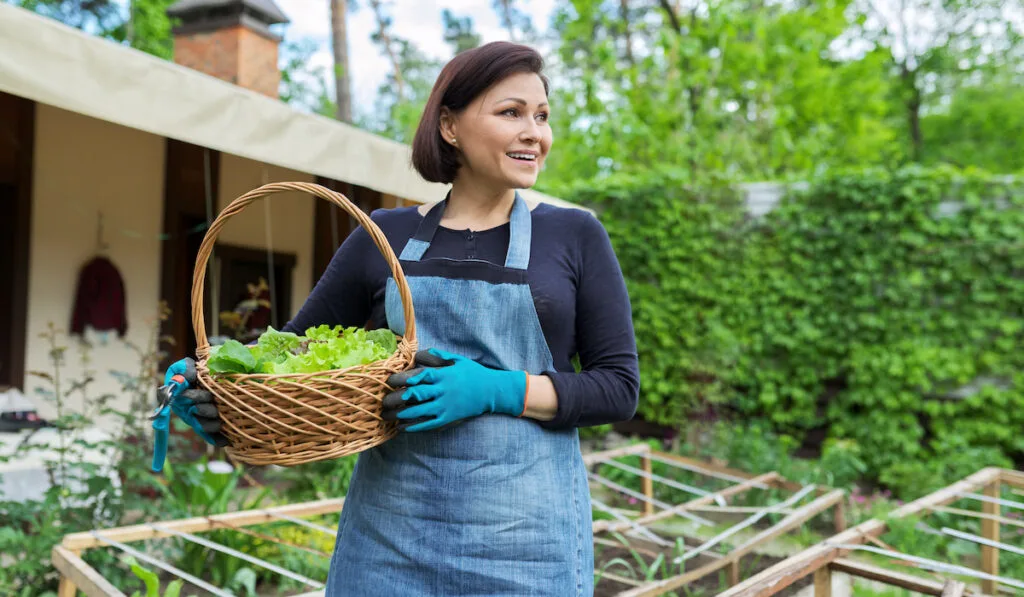
Garden Tasks in December
- Complete the lettuce harvest. If the outside temperature is mild, lettuce can be harvested nearly through the whole month of December.
- Complete the carrot harvest.
- Wrapping the trunks of young trees helps keep them safe from burrowing animals when the snow falls.
- Add some compost to your flower beds and be sure to spread it around your perennials.
- Protect garden tools from rust by cleaning them with a wire brush and coating them with oil.
- Hone the blades of your tools.
- Before storing your lawnmower or tiller throughout the winter, make sure the gasoline tank is empty.
Final Thoughts
The USDA Plant Hardiness Zone Map is a helpful resource for determining when and what you should plant.
When compared to zones 3 and 4, zone 5 has a slightly extended growing season for gardening. However, you can extend the growing season by beginning seedlings indoors if you want to get a head start on planting in the spring.
If you combine the knowledge in this article with your own experience, local knowledge, and good year-to-year notetaking, you should have a pretty good annual gardening calendar tailored just for you and your location!
Resources
- https://garden.org/nga/zipzone/
- https://www.lovetoknow.com/home/garden/gardening-zone-5
- https://naturallist.com/the-wide-world-of-fruits-and-vegetables/?utm_content=cmp-true
- https://veggieharvest.com/calendars/zone-5-vegetable-planting-calendar-schedule/
- https://www.marysheirloomseeds.com/blogs/news/zone-5-vegetable-planting-guide
- https://www.canr.msu.edu/uploads/resources/pdfs/gardencalendar.pdf
- https://sowtrueseed.com/blogs/monthly-garden-schedule-by-zone/zone-5-monthly-garden-calendar-chores-and-planting-guide
